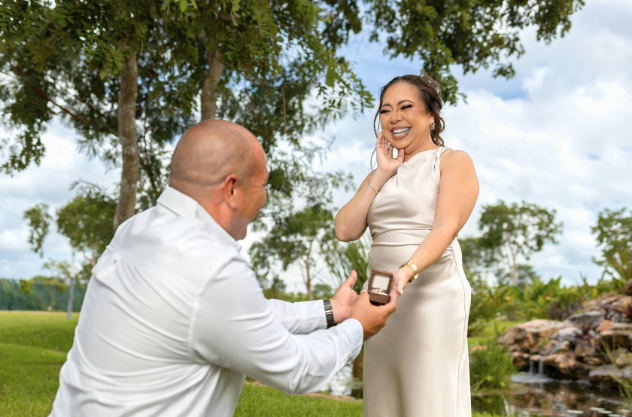What Happens After the Marriage in K-1 Fiancé Visa: Detailed Guide
The K-1 fiancé visa process is an exciting and significant step for couples planning to marry in the United States. However, while getting the K-1 visa approved and entering the U.S. is a major milestone, the journey doesn’t end there. Many couples wonder, “What happens after the marriage on a K-1 visa?” or “What to do after marriage with a K1 visa?” In this blog, we’ll walk you through the crucial steps that follow your marriage on the K-1 fiancé visa, including the application for a marriage-based visa, Adjustment of Status (AOS), and the next steps toward securing permanent residency in the U.S.
As immigration experts at Passage Law, we understand that the K-1 visa process after marriage can be overwhelming for couples. Let’s break down the K1 visa steps after marriage and guide you through the K1 visa process after marriage, ensuring that your transition into married life is smooth and legally sound.
Step 1: Get Married Within 90 Days of Arrival
Once your fiancé(e) enters the U.S. on the K-1 visa, one of the first things you must do is get married within 90 days of their arrival. Failure to marry within this timeframe means your fiancé(e) will have to leave the U.S., as the K-1 visa is specifically intended for couples to marry within this period.
It’s crucial to follow this deadline. If, for any reason, you’re unable to marry within 90 days, you will need to seek a visa extension. Or another legal avenue, which can be challenging and could lead to delays or issues with your future visa for the marriage process.
Step 2: Apply for Adjustment of Status (AOS)
After your marriage on the K-1 visa, the next step is to apply for Adjustment of Status (AOS). This process allows your new spouse to change their status from a non-immigrant to a permanent resident (green card holder). Here’s what you need to do:
- Form I-485: This is the application for permanent residency. After you marry, your spouse will need to submit this form to the U.S. Citizenship and Immigration Services (USCIS).
- Supporting Documents: Along with the form, you’ll need to submit various documents, such as your marriage certificate, proof of financial support, and medical records.
- Biometrics Appointment: After submitting your Form I-485, your spouse will be scheduled for a biometrics appointment, where fingerprints and photos will be taken for a background check.
At this stage, your spouse can also apply for a work permit (Form I-765) and travel authorization (Form I-131) while they await their green card. This is important because your spouse cannot work until they receive work authorization, and they cannot travel freely without approval.
Step 3: Attend the Adjustment of Status Interview

The next step in the K1 visa process after marriage is the AOS interview. After the documents are reviewed and the background checks are complete, you and your spouse will be required to attend an interview with a USCIS officer. During this interview, the officer will ask questions to verify that your marriage is genuine and that you meet the requirements for marriage-based visas.
Be prepared to answer questions about your relationship, how you met, and your future plans. It’s important to bring all the required documents, including:
- Proof of your relationship (photos, joint bank accounts, travel records, etc.)
- Your marriage certificate
- Proof of your spouse’s lawful entry into the U.S. (Form I-94)
It’s essential to answer all questions truthfully. A strong interview can significantly help with the K1 visa after marriage process, leading to a successful approval of your green card application.
Step 4: Green Card Approval and Permanent Residency
After the interview, if everything goes smoothly, your spouse will be approved for a green card and granted permanent residency. If your spouse was married to a U.S. citizen, the green card they receive will initially be conditional and valid for two years. This condition is based on the marriage being less than two years old when they receive their green card.
- Conditional Green Card: If your marriage is less than two years old, your spouse will receive a conditional green card. You will need to file Form I-751 to remove the conditions on your spouse’s residency within 90 days of the two-year anniversary of receiving the green card.
- Permanent Green Card: If your marriage is more than two years old at the time of the K1 visa after marriage approval, your spouse will receive a permanent green card (this is rare).
At this point, your spouse will have the right to live, work, and travel freely within the U.S.
Step 5: Apply for U.S. Citizenship (If Desired)

After your spouse has held a green card for three years and has been married to you for that duration, they may be eligible to apply for U.S. citizenship. This is a significant step and involves submitting Form N-400 and passing a citizenship test. The requirements include:
- Your spouse must be a permanent resident for at least 3 years.
- Your spouse must demonstrate good moral character and meet other residency and language requirements.
This process can take several months, but it’s an exciting milestone in your spouse’s journey toward full U.S. citizenship.
What Happens If There’s a Delay in the Adjustment of Status Process?
Sometimes, the K-1 visa steps after marriage are delayed due to a backlog in USCIS processing, missing documents, or additional security checks. If your spouse’s Adjustment of Status (AOS) application is delayed, they may be unable to work or travel until their status is updated. However, they can stay in the U.S. while waiting for the decision.
If your spouse’s AOS application is denied, it’s crucial to act quickly and consult with an experienced immigration attorney.
What to Do After Marriage on a K1 Visa: Important Tips
While the K1 visa process after marriage can feel overwhelming, here are some important tips to keep in mind:
- File the AOS as soon as possible: Don’t delay filing your Adjustment of Status application. The sooner you file, the quicker your spouse can obtain work authorization and travel permission.
- Keep track of all documentation: Ensure that all your documents are up-to-date and that you have everything you need for your AOS interview. Missing documents can delay the process.
- Be prepared for the interview: The AOS interview is crucial for proving the legitimacy of your marriage. Make sure you and your spouse are ready to answer questions about your relationship.
- Plan financially: While your spouse is waiting for work authorization and permanent residency, you may need to plan your finances accordingly. Understand that they won’t be able to work until they’ve received the appropriate authorization.
Final Thoughts: After the K1 Visa Marriage, What Next?

After your K1 visa marriage, the process doesn’t end there.
Contact us today for personalized advice and expert assistance in navigating the next steps after your K1 fiancé visa marriage.
Disclaimer: This article offers general legal information, not legal advice. Do not rely upon this information without seeking legal counsel. If you need legal advice, you may contact us directly to speak with an attorney. We disclaim all liability with respect to actions taken based on any information presented. Every case is different, and outcomes will vary depending on the unique facts and legal issues of your case.







